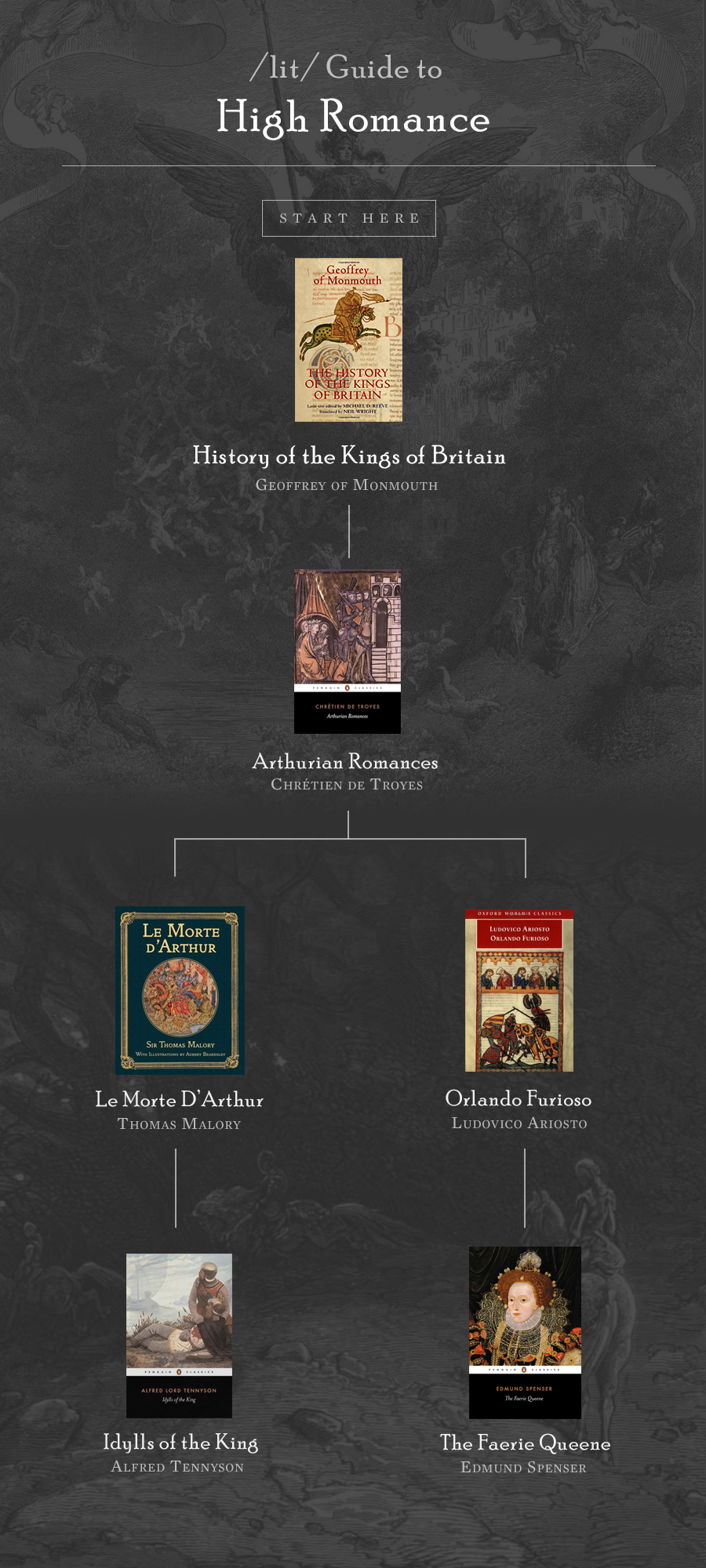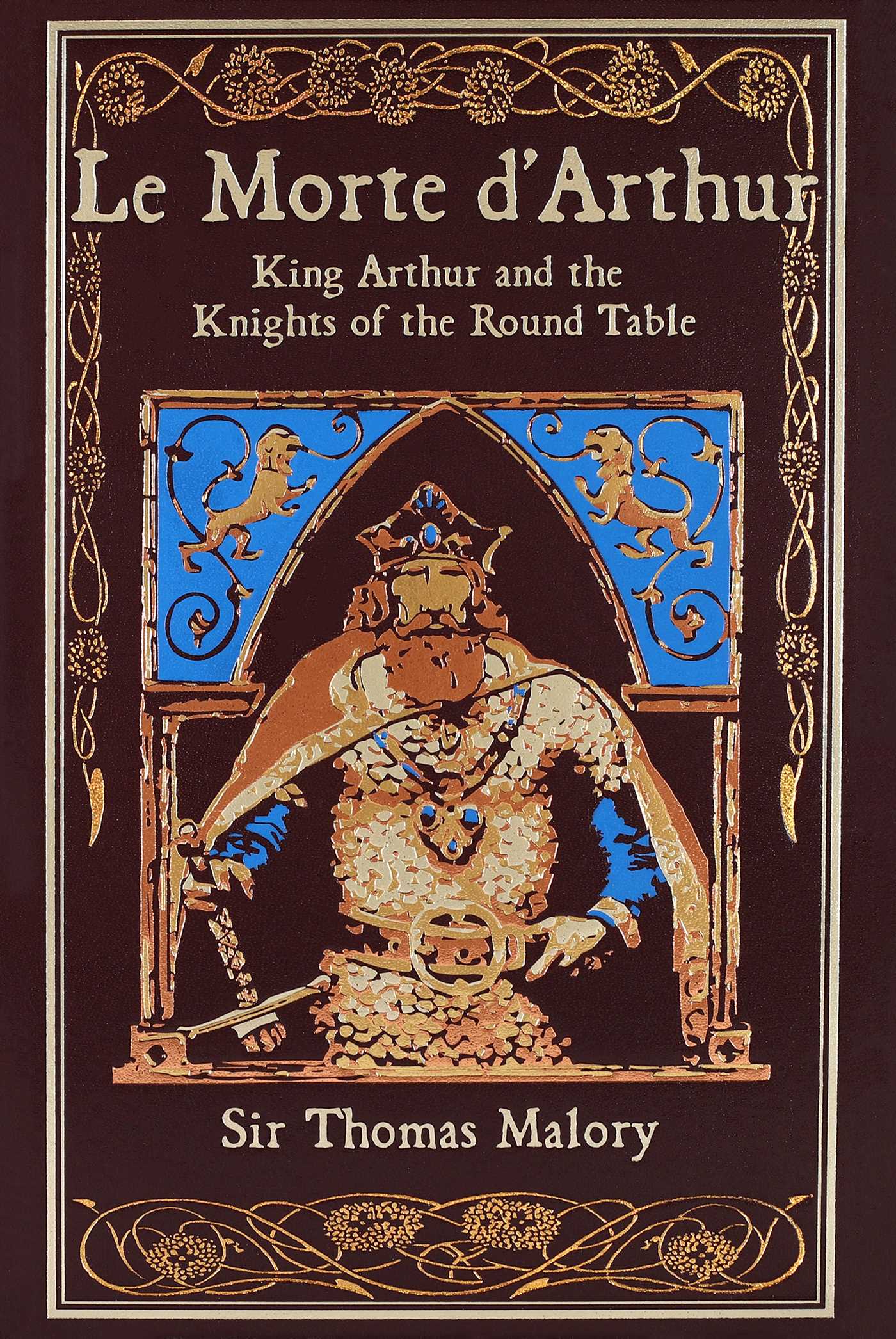
High Romance

High romance literature refers to a genre characterized by its focus on idealized love, chivalry, and heroic deeds, often set in distant or fantastical settings. It typically features elaborate prose, intricate plots, and heightened emotional intensity. Themes commonly explored in high romance literature include the quest for true love, the triumph of good over evil, and the pursuit of noble ideals. This genre often incorporates elements of mythology, folklore, and symbolism to evoke a sense of wonder and enchantment. The narratives frequently revolve around protagonists who embark on epic journeys or undertake daring adventures in the name of love or honor. High romance literature prioritizes emotional depth and moral complexity, presenting readers with richly textured worlds and compelling characters that resonate on a profound level.
-

History of the Kings of Britain
Geoffery Monmouth
-

Arthurian Romances
Chretein de Troyes
-

Central figures in the Matter of Britain, King Arthur and his Knights of the Round Table still inspire many books and films today. Drawing on the legends of Camelot from French and English sources, Sir Thomas Malory compiled the drama of illicit love, the magic of sorcery, and the quest for the Holy Grail into a sordid and chivalrous tale that's been recounted for centuries. This beautiful leather-bound volume, with gilded edges and a ribbon bookmark so you never lose your place, makes a treasured edition of classic Arthurian folklore in any home library.
-

Idylls of the King
Alfred Tennyson
-

Orlando Furioso
Ludovico Ariosto
-

The Faerie Queene was one of the most influential poems in the English language. Dedicating his work to Elizabeth I, Spenser brilliantly united Arthurian romance and Italian renaissance epic to celebrate the glory of the Virgin Queen. Each book of the poem recounts the quest of a knight to achieve a virtue: the Red Crosse Knight of Holinesse, who must slay a dragon and free himself from the witch Duessa; Sir Guyon, Knight of Temperance, who escapes the Cave of Mammon and destroys Acrasia’s Bowre of Bliss; and the lady-knight Britomart’s search for her Sir Artegall, revealed to her in an enchanted mirror. Although composed as a moral and political allegory, The Faerie Queene’s magical atmosphere captivated the imaginations of later poets from Milton to the Victorians.